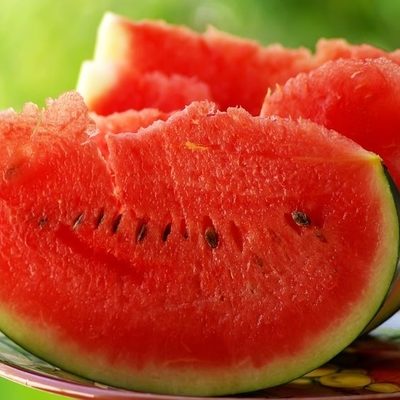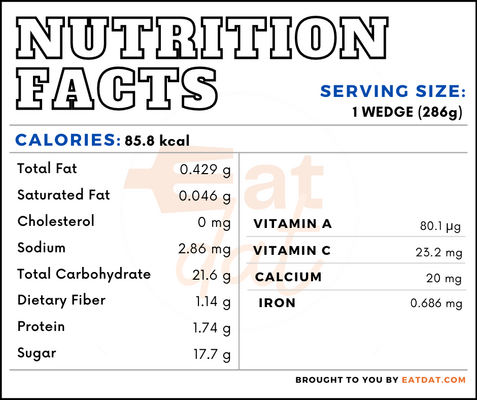
Watermelon
What is a Watermelon?
Watermelon is a large fruit that grows on the ground and is usually an oval shape. It is a very heavy fruit, sometimes weighing up to 15 kg. Its outer covering is light green in color and its flesh is red or yellow, with black, white, or red pips.
- However, recent agricultural breeding have brought out seedless watermelons.
- The fruit is sweet and juicy and contains more than 90% water. It is consumed raw.
This fruit comes in a few different varieties, including the top performing varieties like:
- Bijou
- Captivation
- Kingman
- SV0258WA
- Citation
- Cut Above
- Harvest Moon
- Sweet Polly
- Traveler
- Triple Treat
There are hundreds of other varieties developed by horticulturists and farmers. In Japan, it is often grown in different shapes.
Watermelon origin
Watermelon grew wild in Africa 5,000 years ago. This melon was not the melon we know today and was bitter and hard. Archaeological evidence of Egyptians eating them have been found in Egyptian tombs. One theory is that the fruit began to be cultivated in Africa due to its water content, which could be used during the hard summer months. From 400 BC, watermelons had reached the Mediterranean coast and was used by Greeks and Romans. This fruit was being independently cultivated in India, according to some historians. Trade brought it to China, which is today the main producer of watermelons, followed by Turkey and Iran.
Commercial production
It is a warm summer crop and requires well-drained soil. It must be protected against diseases and problems such as blossom-end rot, sunscald, stem splitting, hollow heart, etc. Some farmers grow seedless variety of watermelons, which are also known as triploid melons, which has a slightly different production method and slightly more expensive to grow.
Nutrition
One wedge (286g) of watermelon contains:

This sweet fruit is low in calories but is full of nutrients. A single watermelon can meet 21% of the daily vitamin C requirement and 17% of the daily vitamin A requirement. It is also a good source of potassium and fiber. It contains lycopene, a carotenoid known to protect against cancer and heart diseases. Studies have proved that consumption of this can keep blood pressure in check and improves the blood lipid profile. This is also a great source of l-citrulline, which gets converted into l-arginine and nitric oxide, thus boosting general immunity.
Recipes
Watermelons make for a good dessert and is often eaten raw as it is. However, it can also be adapted into different dishes. Here are a few interesting recipes.
FDA regulations
The FDA describes all fresh fruits, including watermelons, as raw agricultural commodity and strictly regulates all aspects its growing, harvesting, packing, and storage. The FDA also regulates canned watermelon products as well as commercially produced. watermelon jams and preserves.
References
Mark Strauss, National Geographic, The 5,000-Year Secret History of the Watermelon
https://www.nationalgeographic.com/news/2015/08/150821-watermelon-fruit-history-agriculture/
Paris, Harry S. “Origin and emergence of the sweet dessert watermelon, Citrullus lanatus.” Annals of botany vol. 116,2 (2015): 133-48. doi:10.1093/aob/mcv077, https://www.ncbi.nlm.nih.gov/pmc/articles/PMC4512189/
- Lum, Tiffany et al. “Effects of Fresh Watermelon Consumption on the Acute Satiety Response and Cardiometabolic Risk Factors in Overweight and Obese Adults.” Nutrients vol. 11,3 595. 12 Mar. 2019, doi:10.3390/nu11030595
https://www.ncbi.nlm.nih.gov/pmc/articles/PMC6470521
